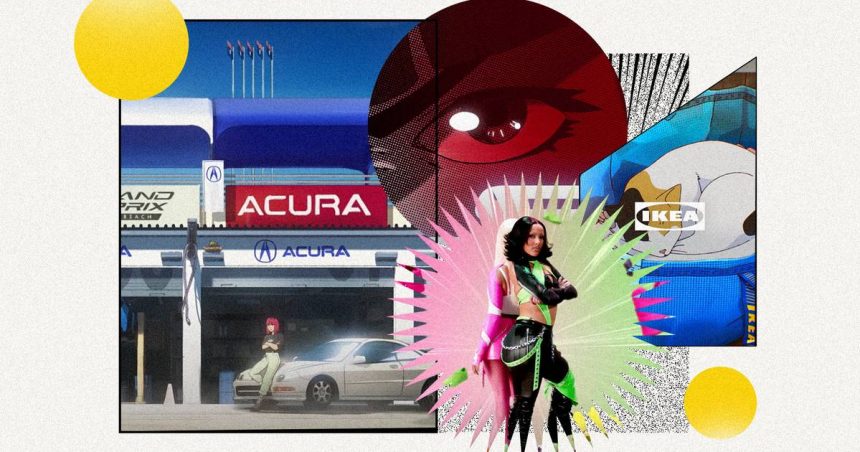Last month, Netflix released the trailer for its live-action adaptation of “One Piece.” The trailer, based off of a popular anime series of the same name, has just short of 10 million views on YouTube.
Netflix isn’t the only streamer investing in the Japanese genre. In July, Hulu debuted a hub called “Animayhem” dedicated to anime and adult animation.
The global rise of anime is tied to its popularity among Gen Z, Hannah Hickman, partner and head of youth culture practice at cultural intelligence consultancy sparks & honey, told Marketing Brew.
“They’ve grown up with the level of access to global cultures that previous generations didn’t necessarily have. They’re listening to K-pop, buying French drugstore beauty products, watching Bollywood movies,” she said. “That also coincides with just this mass availability on streaming. Hulu and Netflix have really impressive anime libraries. You can watch on YouTube. There are apps and platforms like Crunchyroll. So it’s sort of this perfect storm of forces that create this explosion.”
Brands have taken note of its rise, with companies ranging from Ikea to Acura creating anime content to grab Gen Z’s attention.
A day in the life
As anime trends in the US, advertisers are taking various approaches to it as they look to target different audiences.
Earlier this year, Ogilvy partnered with Ikea to produce a TikTok anime series called “Find Your Slice of Life” promoting the brand’s products for college dorm rooms. Creative studio Clubcamping was tapped to animate the series, which features college students in different scenarios. The series leans into the “slice of life” anime genre.
“The premise of slice of life is: rather than your standard action-adventure fantasy anime, it’s much more rooted in everyday life and the intimate moments of going about your day. That really paired well with Ikea’s brand vision,” Sho Matsuzaki, creative director at Ogilvy, said. “People seem to really be liking the series so far.”
Taco Bell, meanwhile, took a different approach with its first anime campaign. Two summers ago, to promote the return of its Nacho Fries, the chain rolled out a campaign that drew on mecha, or “robot,” anime. More recently, Skechers debuted a campaign starring Doja Cat that took inspiration from “Y2K, cyberpunk and anime aesthetics,” according to a company press release.
Get marketing news you’ll actually want to read
The email newsletter guaranteed to bring you the latest stories shaping the marketing and advertising world, like only the Brew can.
Driving force
The automotive sector is taking a page from the anime playbook: Last year, Acura created an anime series to promote its Type S vehicle.
Called “Chiaki’s Journey,” the series, designed in collaboration with Mullen Lowe Los Angeles, follows main character Chiaki as she drives a Type S vehicle and learns how to race. Acura promoted the series with some paid media: Meliza Humphrey, Acura’s senior brand manager, said ads were designed to drive people to longer versions of the episodes on YouTube.
“When I say longer version, each episode was a minute, but we know a minute is pretty long on social media,” she said. Still, the series got “a lot of organic reach as well” on the platform, according to Humphrey.
Acura debuted a second season earlier this year. “We created season two because even as we were reading the comments of season one, we had fans asking for more,” she said.
Recently, Nissan created a campaign aligned with LoFi Girl on YouTube, a popular account that features livestreams of instrumental music paired with anime-style imagery. The automaker created a video with a similar look and feel to run as a six-minute ad before Lofi Girl videos.
In April, Allyson Witherspoon, global CMO of Nissan, told Marketing Brew her team was “blown away by the results.” Within a two-month span, Nissan’s video had more than 12 million views. “You don’t see that very often,” she said.
More to come?
Moving forward, Hickman said she would “place bets on anime continuing to rise in prominence in the US.”
For brands interested in anime-style campaigns, she said it’s important for marketers to have “real respect for the genre” by creating content, whether it’s an animated series or manga (Japanese graphic novels and comic books), “not just ads.” Several brands, including Ikea, Taco Bell, and Acura, created manga as part of their campaigns.
“It’s certainly a higher investment, but I think it pays off for audiences of anime fans because it demonstrates a real understanding of anime as an art form, rather than just cashing in on something that’s popular with Gen Z in the moment,” Hickman said.
Read the full article here










